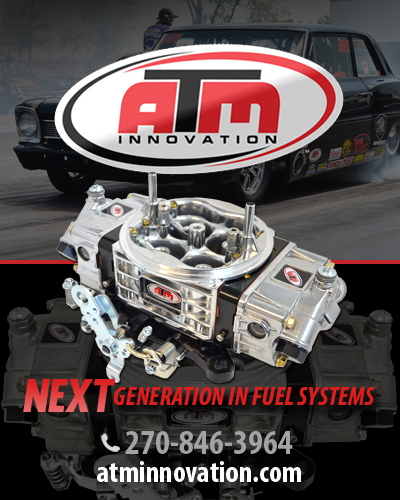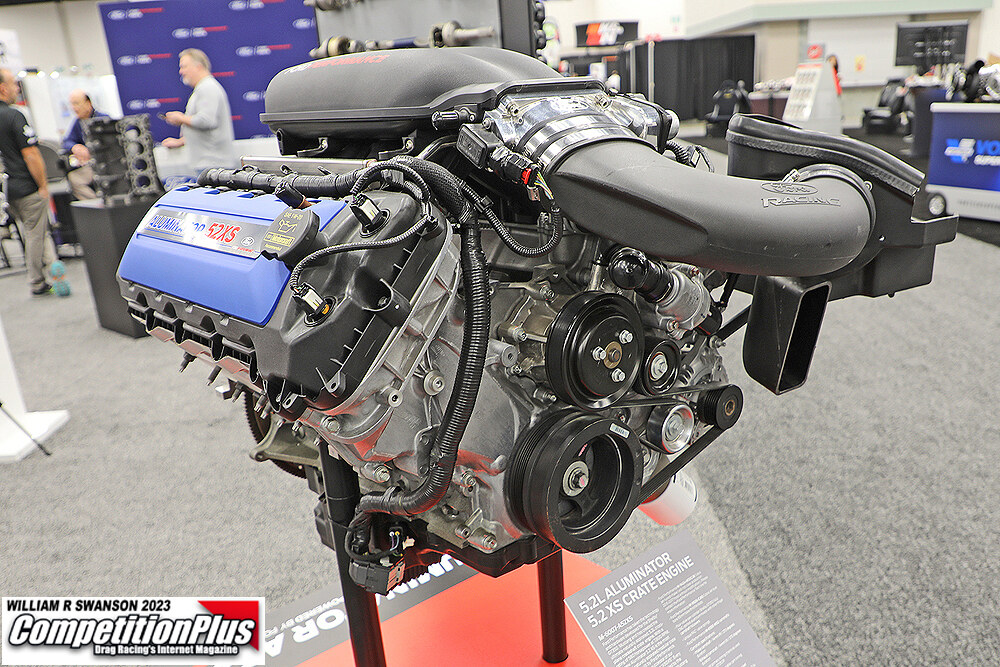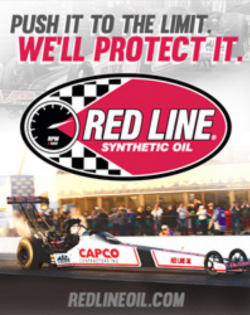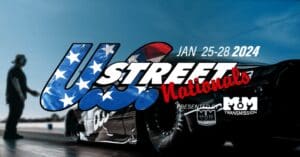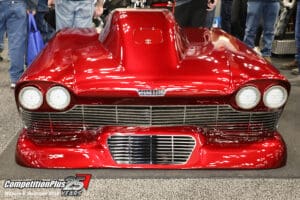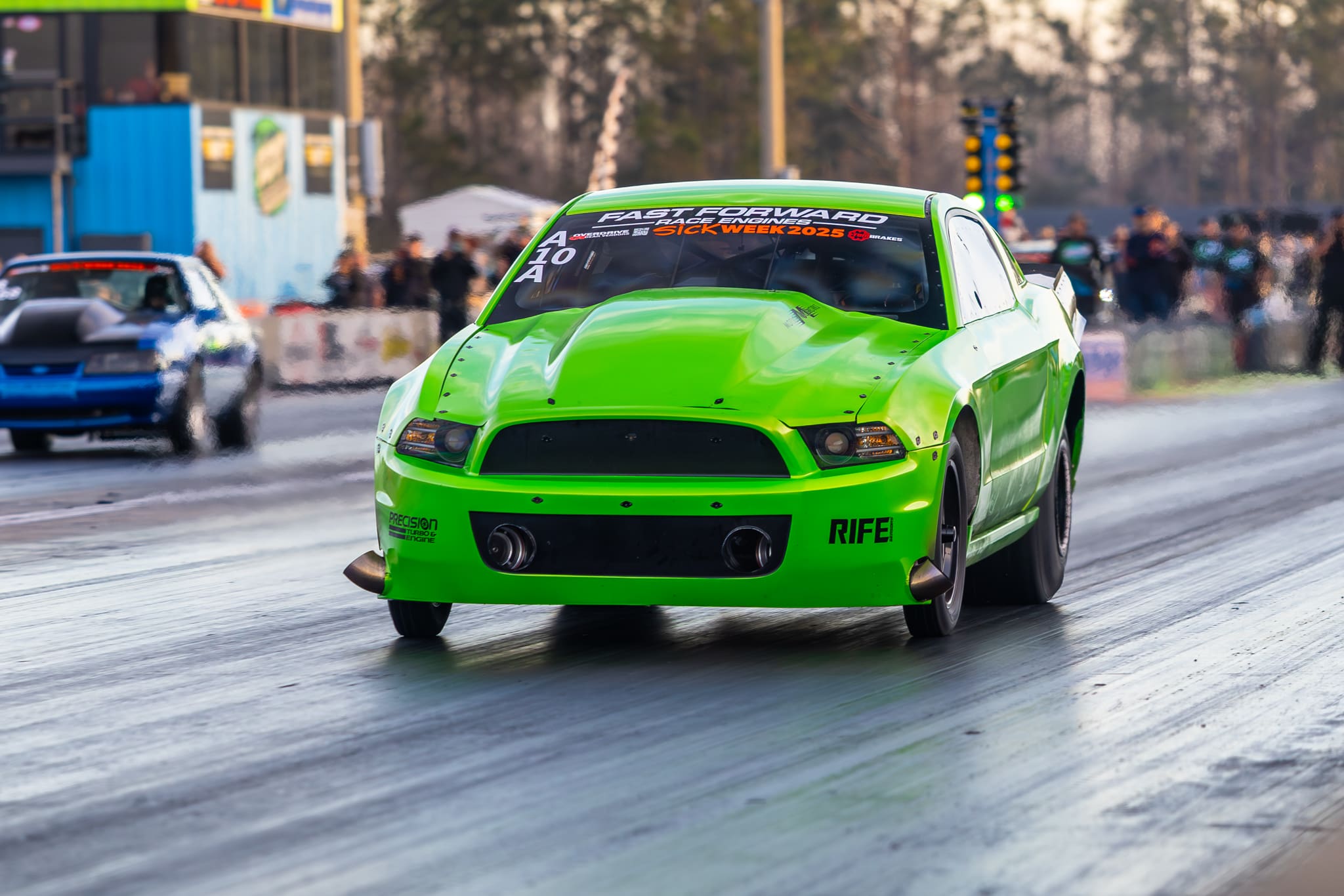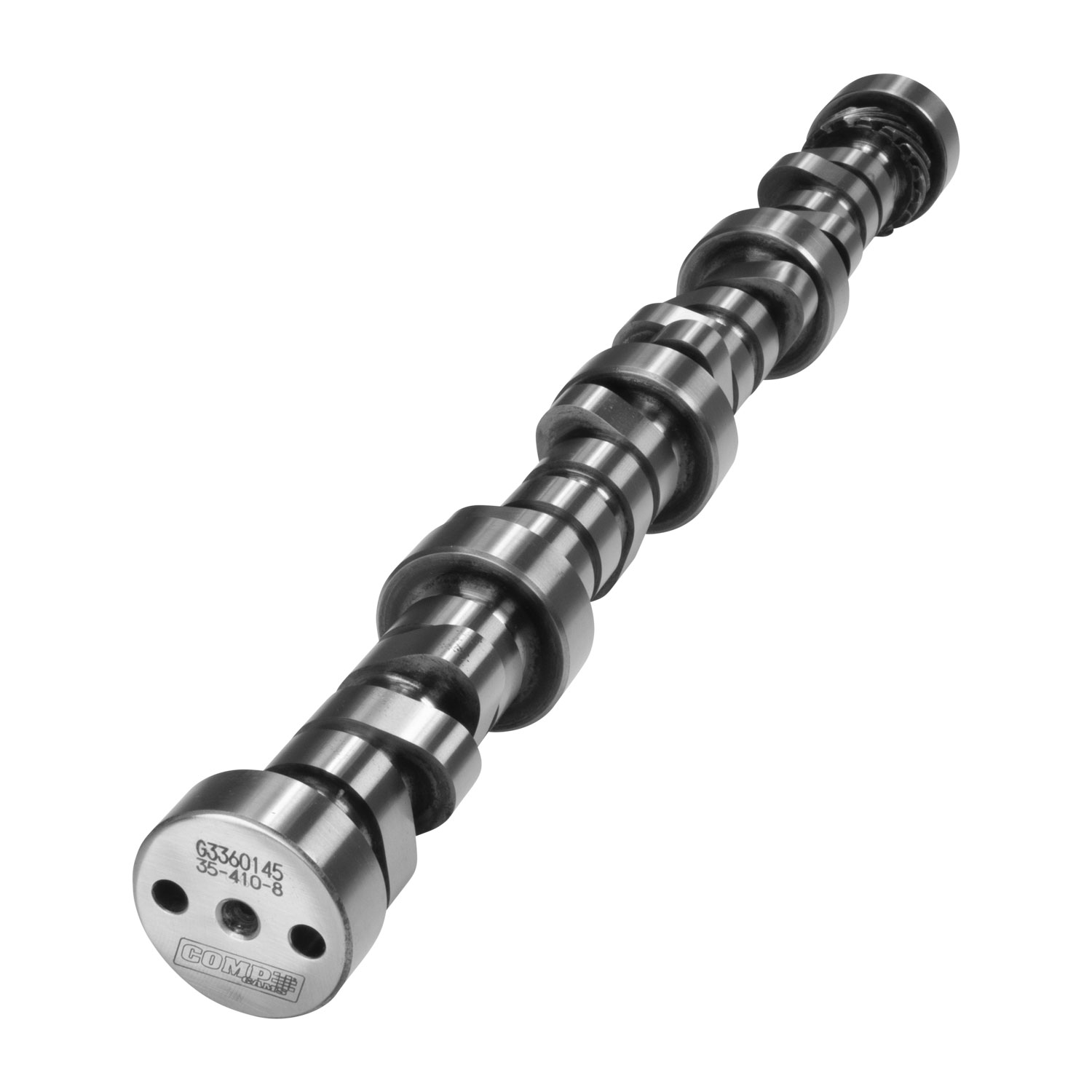

Decorated NHRA Top Fuel driver Larry Dixon says it isn’t a question of if, but when, will there be another dragster break apart at speed.
A little over 90 days after his Bob Vandergriff Racing dragster broke in half just shy of the eighth-mile, there are no definitive answers why the car with no signs of fatigue just came apart.
When Dixon’s dragster broke in two, the driver’s compartment soared as high as the scoreboards before crashing down to earth. Three weeks later, popular Australian driver Phil Lamattina experienced almost a carbon copy of the same unexplained accident. The difference; Dixon walked away with soreness while Lamattina suffered a severe back injury.
By the grace of God, Dixon understands his dragster landing on its Goodyear slicks cushioned what was measured (not estimated) as a 109g spike of gravitational force. He then slid into the retaining wall at another 45 g’s. The force of Dixon leaving the starting line only measured 4g.
Dixon believes there is a reluctance of the sanctioning body to not rush into mandating a new front half design for the Top Fuel dragsters. At this stage of the game, three months after the fact, he believes the NHRA should feel safe from this kind of criticism.
“I understand [NHRA not wanting to make knee-jerk reaction] to a point,” said Dixon. “I’ve also seen where we have lost lives and [NHRA] has made changes in a week. I feel fortunate that I didn’t lose my life, and no one else lost their life. I hope the proper areas are addressed before someone else gets hurt.”

Asked if he had been more seriously injured did he believe there would be a different response, Dixon provided a to-the-point answer.
“Look at history,” Dixon said. “That’ll tell you whether [NHRA] would or wouldn’t.”
In the last decade, NHRA mandated changes after critical injury or death to the driver. NHRA made immediate changes to the driver’s cockpit following Darrell Russell’s fatal accident in 2004. Following Eric Medlen and Scott Kalitta deaths, NHRA implemented changes to the Funny Car chassis design and race track length. After John Force experienced a chassis failure and was critically injured the NHRA clarified the use of heat-treated tubing.
The Top Fuel front-half chassis design, outside of having the wheelbase extended to 300-inches, has largely remained the same for over four decades.
However, NHRA Director of Technical Operations Glen Gray said this doesn’t mean improvements haven’t been made to make the dragsters safer.
“A tremendous amount of work has been done by SFI and their chassis committee to improve the cockpit over the years,” said Gray. “There have been many iterations to the Top Fuel Dragster chassis specification since its inception. The strength and safety of the cockpit area has been demonstrated recently with Antron Brown walking away from two severe accidents and Larry Dixon walking away from his in Gainesville this year. Also, eight years ago the SFI chassis committee did extensive research to improve the specification to the back-half of the car. Those changes have been successfully implemented into all cars in NHRA Drag Racing competition.”
Gray confirmed the NHRA began a dialogue on the SFI’s present Top Fuel front end back in December when the association was approached by teams seeking clarification on front end designs. In turn, Tim White (NHRA’s Director of Engineering) asked SFI to have a Top Fuel chassis meeting at the PRI show to discuss tightening the specification.
“The request Tim made at that time was not made with any concerns about how the chassis were being built, but rather to not allow teams too much freedom in the design of their front-halves that could result in chassis issues,” Gray confirmed. “This meeting was held and suggestions were incorporated into a preliminary version of the specification but had not been finalized at the time of Larry Dixon’s incident.
“Based on Larry Dixon’s incident, the SFI committee was re-convened and additional changes to the specification were discussed.

The sanctioning body has been working in conjunction with a chassis builder committee as well as SFI to determine what can be done to make the dragsters safer.”
Because the current SFI specs allow “wiggle room” Dixon’s crew chief Mike Guger said his team immediately began working on a fix until a better design was mandated.
“We couldn’t, in good conscience, send our driver back out there without doing something,” Guger said. “Good, bad or indifferent, something had to be done before our drivers could drive one of these cars.
We never ran the car without the reinforcement and never will. We are waiting for the new spec to come forward.”
Top Fuel team owner Bill Miller used the leeway in the current SFI Top Fuel specs to build what he feels is a safer dragster up front.
Miller, who bought his chassis equipment from highly regarded chassis builder Don Long when he retired, believes adding a slip-tube configuration to his upper and lower frame rails goes a long way toward making his driver, Troy Buff, safer than with the current spec.

“You simply do not want the tubing flexing in and out,” said Miller. “You want the tubing to flex up and down. With no control over it other than the single tie bar to tie the two frame rails together, it’s going to bow out. It’s going to do what is called guppying. It fatigues right at the joint. Our car has slip-joints in it to allow everything to move when it needs to move. Those slip joints will move as much as three-quarters of an inch. This tells you if you don’t let it move, they will put so much strain on the joints and lead them to fracture or split.
“I can’t speak to the wall thickness on the cars which broke, mine is .065, as opposed to .049 or .058, whether that’s a player or not, I cannot say. I do know if I have an inch-and-a-half .095, which is what the roll cage is built out of, that if I put a piece of .065 in front of the driver’s compartment, I know which is going to break first.”
Dixon’s car didn’t have the slip tube design but crew chief Guger confirms a new dragster coming from the DSR chassis shop will be equipped with a slip tube design on the new car. Lamattina’s car was equipped with a slip-tube design but only on the lower rail.
A lot of the stress on the dragster chassis can be attributed to the way cars are run to the 1,000-foot as opposed to 1320.
Workmanship was ruled out early as a cause in the Lamattina crash.
Officials of the Australian Drag Racing Association impounded the Lamattina dragster and have been in communication with the NHRA and chassis committee on solving the issue.
Murf McKinney, who built the Lamattina car, wouldn’t say this was a knock on the shorter racing distance; just the reality teams are more aggressive early in their runs as opposed to what they did when a quarter-mile run was the norm.

“I think that the cars are going quicker sooner on the track, so they have the aerodynamic loads on them happen earlier on the race track and for a longer amount of time than what they used to be,” said McKinney. “I think we have exhausted our margin for safety that we had on the front half of the car.”
McKinney, who owns McKinney Corporation, a chassis builder of nitro-burning cars, opened his business in 1981 and confirmed to his knowledge there hasn’t been a change in the SFI spec for the front end design of the dragsters since he started.
“If we were allowed to put have sort of suspension on these front, it would immediately reduce the stress on the front-half of the cars,” said McKinney. “Right now, we depend on the chassis to be the suspension to do all the work. The old front engine cars used to have torsion bars on them. You had the opportunity to get the car to respond at varying rates. Today, all we have is the tubing.”
The current situation leaves Dixon with the feeling there’s no assurance this unexplained failure won’t rear its ugly head the next time he straps into his dragster.
“I saw it somewhere, whether on the wing of a Top Fuel car or a t-shirt, ‘if you don’t fix your mistakes you are condemned to repeat them,” Dixon said.
McKinney, who is part of the chassis committee challenged to find an answer and solution, echoes Dixon’s concerns this unexplained chassis failure is waiting to rear its head again. The chassis builder only has one voice in the process.

“I told [the committee] after Dixon’s crash, it was going to happen again,” McKinney said. “It’s my opinion, in the spec we have, we have two options – either a double k-member in the floor or the running diagonals. We used to think we could do one or the other because they did the same thing. After Dixon’s accident, Todd our engineer spent two days trying to duplicate the accident on his computer. We came away from that, after two days, feeling they don’t do the same thing, they do two different things and we should run both of them. I brought that to the committee and it didn’t go anywhere.”
McKinney said he took his revelations to his customers following the Lamattina accident and all have since upgraded their cars. Of his 13 customers he said his company either sent over a kit or they onstalled the changes at his shop.
The chassis committee met again on June 25, 2015 with the group convening for more investigation on column buckling and bay links and what effects different tubing has on these. The next meeting, set tentatively for three weeks from now, is expected to result in a resolution. A source close to the situation said most questions were answered, but a few remain unanswered at this time.
“The SFI chassis committee had another meeting yesterday to not only review the results of an investigation into Larry Dixon’s incident but also to discuss the recent incident in Australia,” explained Gray. “Based on the data presented some additional research is being done with a target date of July 16th to reconvene the committee. It is important to allow the committee to do the proper research and get to the root cause of the two recent incidents such that the proper changes to the front-half, if needed, are implemented.
“Much research and effort was put into the specifications for the cockpit and the back-half and the results of that hard work has proved to be successful. That same process needs to be followed here to ensure that the correct changes are made. Hasty decisions made without the proper data or research by the committee could result in creating other unintended issues. Everyone involved understands the need to move as quickly as possible to resolve this issue. I feel very positive about the work being done by SFI’s Chassis Committee and confident that they will make the correct decisions.”
In the meantime, with races at Norwalk and Chicago to be run before the committee meets again, the clock ticks as there appears to be more of a sense of importance to fix the issue without a shadow of a doubt over the potential of another accident happening.
This is of little consolation to Dixon, who believes the NHRA executives needed to quickly take control of the situation, instead of a committee.
“It sounds like those in the know have the definitive answer for it; it’s just a matter of having the sanctioning body step up like they did with the back half of our cars like we did with Cory’s [McClenathan] wreck, and then, after Eric Medlen and John Force’s bad wrecks in Funny Car,” Dixon said. “We need [NHRA] to step up and mandate a rule to make the cars safer. Nobody’s going to do this on their own because they might give up some performance. If there’s a rule, then everyone has to have it. Then it’s a level playing field. That’s what we really need from our sanctioning body.”
Dixon and the other Top Fuel drivers await the NHRA to fill the need.













